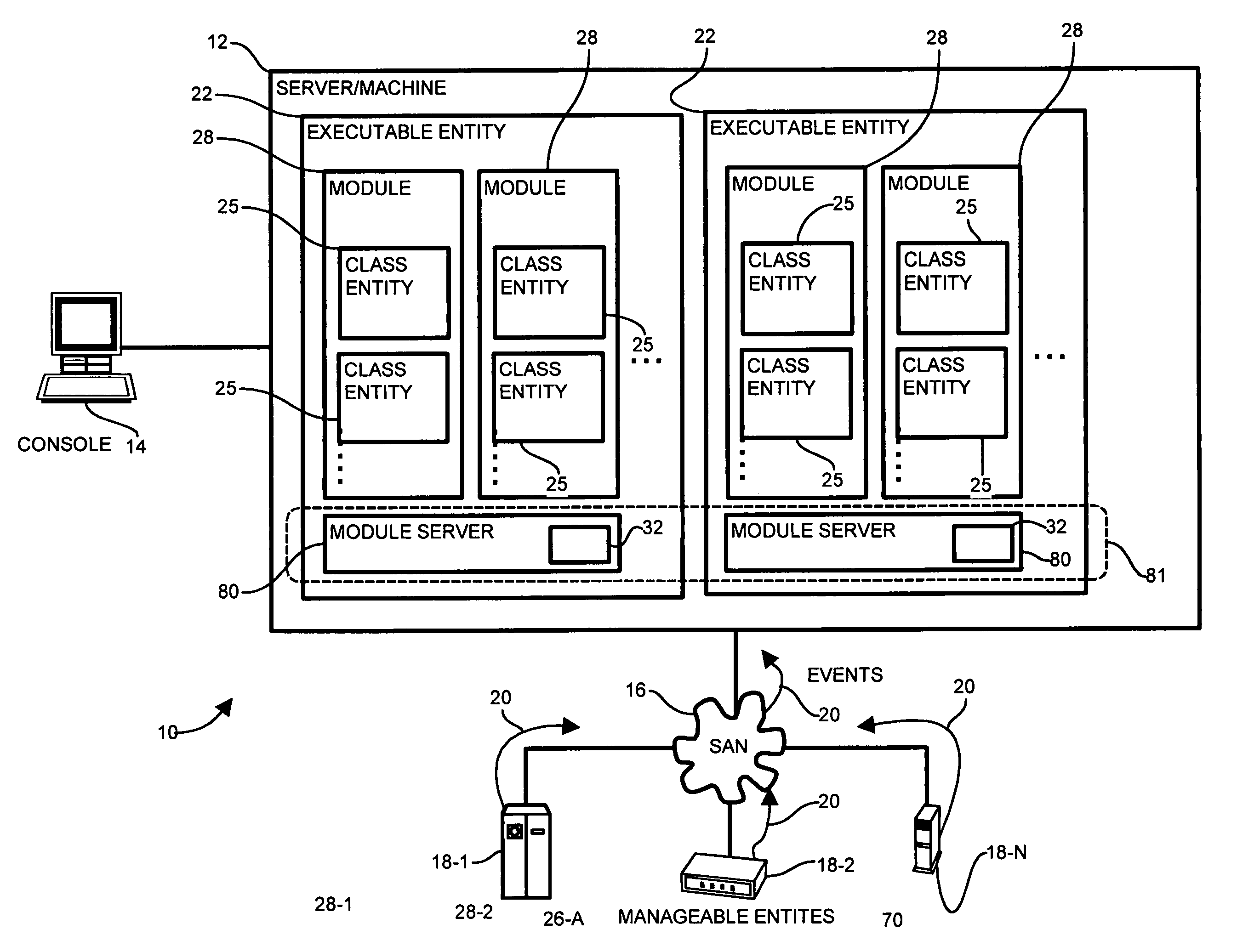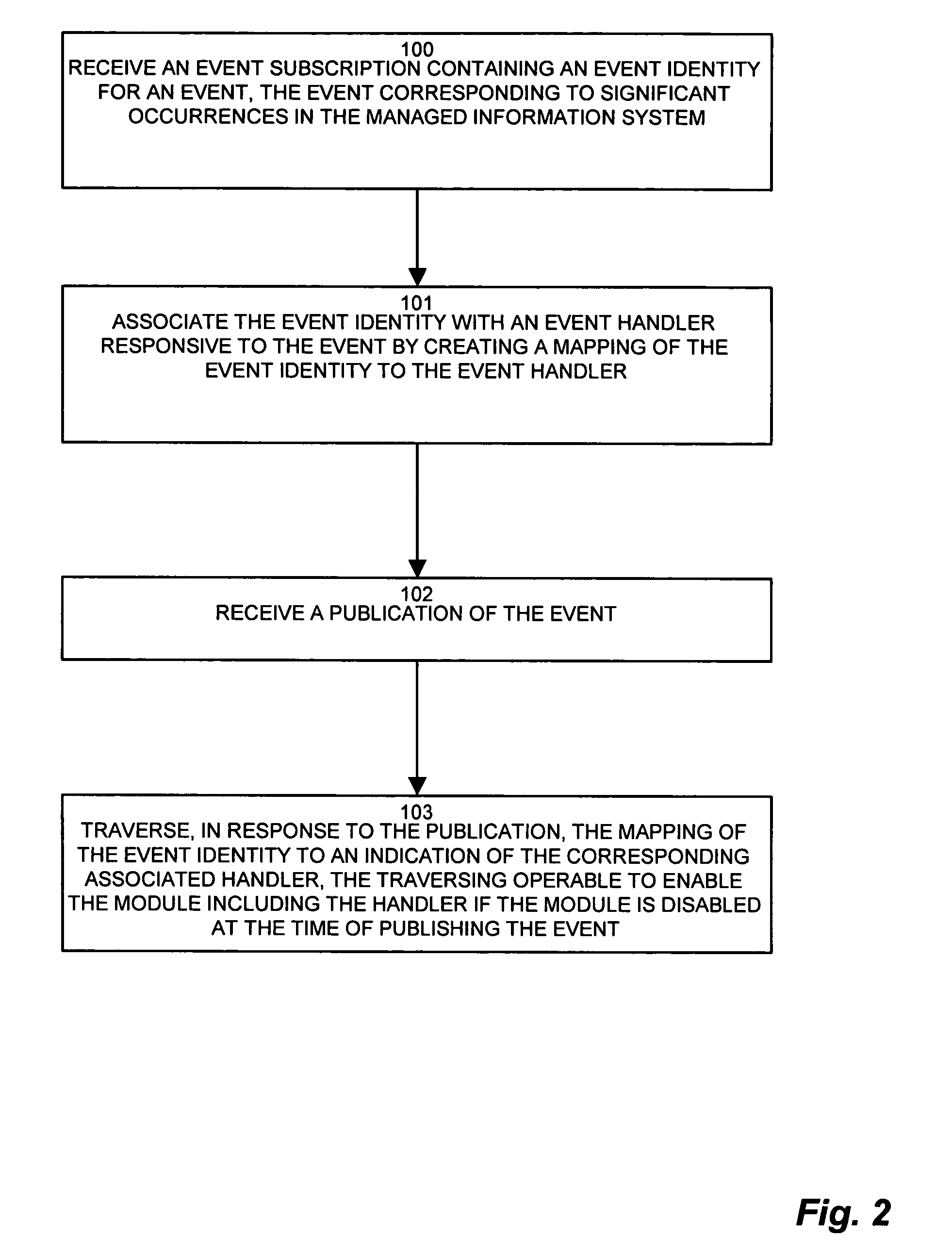Methods and apparatus providing an event service infrastructure
a technology of event service infrastructure and method, applied in the direction of instruments, program control, multi-programming arrangements, etc., can solve the problems of lack of inability to provide predefined standard event notification mechanism, and often large time and effort for development efforts, so as to reduce memory consumption, compound complexity, and contribute to undesirable overhead and footprint requirements
- Summary
- Abstract
- Description
- Claims
- Application Information
AI Technical Summary
Benefits of technology
Problems solved by technology
Method used
Image
Examples
Embodiment Construction
[0042]Particular configurations of the invention provide a method for an event service infrastructure which localizes the event service view to include only relevant events employed by each respective developer, therefore requiring consideration and manipulation of only the pertinent event definitions and structures for each developer. Configurations of the invention further provide a reporting mechanism which automatically correlates each event with the corresponding handler upon reporting of the event by the detector of the event occurrence, thereby relieving the event handler of polling and / or casing the events to determine event handler invocation.
[0043]In particular configurations of the invention, the event service infrastructure allows an event, or class definition, to define the event and related event data. Invocation of the event includes only the event specific class definition, in which the infrastructure transparently processes the reporting and invocation. An event han...
PUM
 Login to View More
Login to View More Abstract
Description
Claims
Application Information
 Login to View More
Login to View More - R&D
- Intellectual Property
- Life Sciences
- Materials
- Tech Scout
- Unparalleled Data Quality
- Higher Quality Content
- 60% Fewer Hallucinations
Browse by: Latest US Patents, China's latest patents, Technical Efficacy Thesaurus, Application Domain, Technology Topic, Popular Technical Reports.
© 2025 PatSnap. All rights reserved.Legal|Privacy policy|Modern Slavery Act Transparency Statement|Sitemap|About US| Contact US: help@patsnap.com



